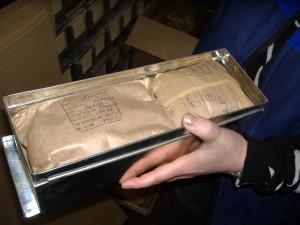Click on the picture for some impressions from my recent visit to the N.I. Vavilov Institute Research Institute for Plant Industry in St Petersburg, Russia on the occasion of a SEEDNet meeting. A veritable monument to agrobiodiversity. And don’t forget Nikolai Ivanovich has a voice.
Spring is in the air…
…and a young man’s thoughts naturally turn to gardens. Honduran gardens and their role in health. Cuban organic gardens. And via them, Around the World in 80 Gardens, a BBC documentary series that looks like it might be worth getting on DVD. And, finally, let us not forget Kew Gardens, 250 years old this year.
LATER: And there’s also an extensive discussion of the role of homegardens in providing nutrition for people living with HIV at the Solution Exchange for the Food and Nutrition Security Community in India. Thanks, Arwen.
LATER STILL: LEISA rounds up evidence of the worldwide gardening craze.
A dangerous business
Farmers are finding themselves in the front lines. In Gaza. And on the southern island of Sulu in the Philippines. And no doubt elsewhere around the world. The problems in Sulu also affect the nearby Zamboanga peninsula, home of one of the major coconut genebanks of the world, at the Philippines Coconut Authority‘s Zamboanga Research Centre.
From our far-flung correspondent
Luigi is trapped in the ultimate capitalist nightmare, unable to afford both vodka and internet access. But he managed to smuggle out a couple of images from a meeting in St Petersburg.

N.I. Vavilov looks down on the assembled conference attendees. I’m not sure I’d be able to concentrate under those circumstances.

And the Great Man’s desk. Would it have been too much to have sat in his chair?
How IR8 was born
Henry M. “Hank” Beachell shared the World Food Prize in 1996 with Gurdev Khush. Both IRRI rice breeders, they were responsible for breeding the first Green Revolution dwarf rice variety, IR8. IRRI’s channel on youtube has just posted an excerpt from a USDA-National Agricultural Library (NAL) video project called Precious Seeds which tells his story. The money quote: “…cooking quality was secondary, milling quality was secondary, the main thing was rice production.”
